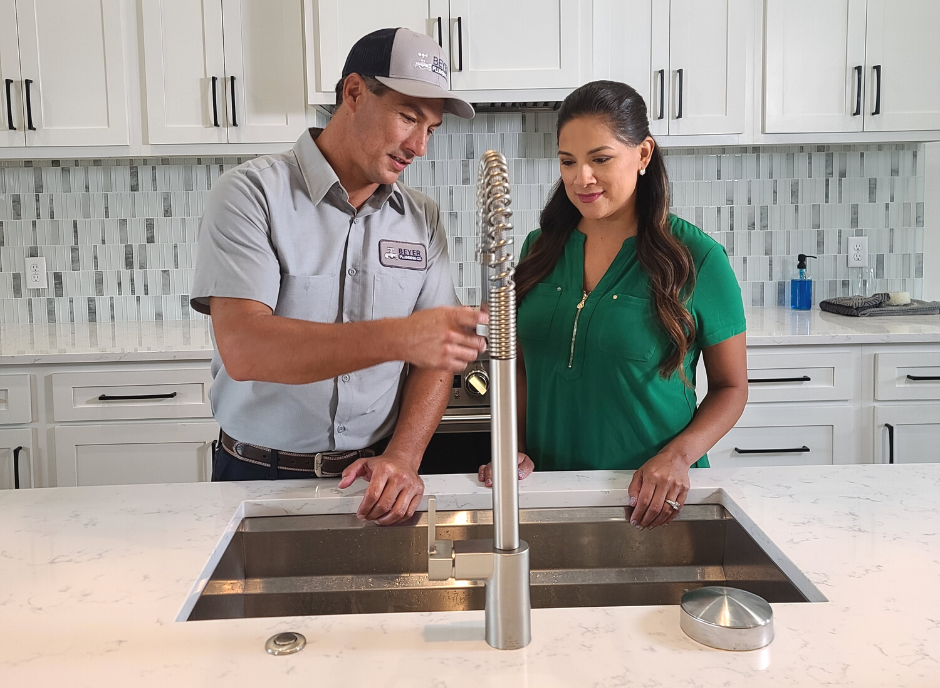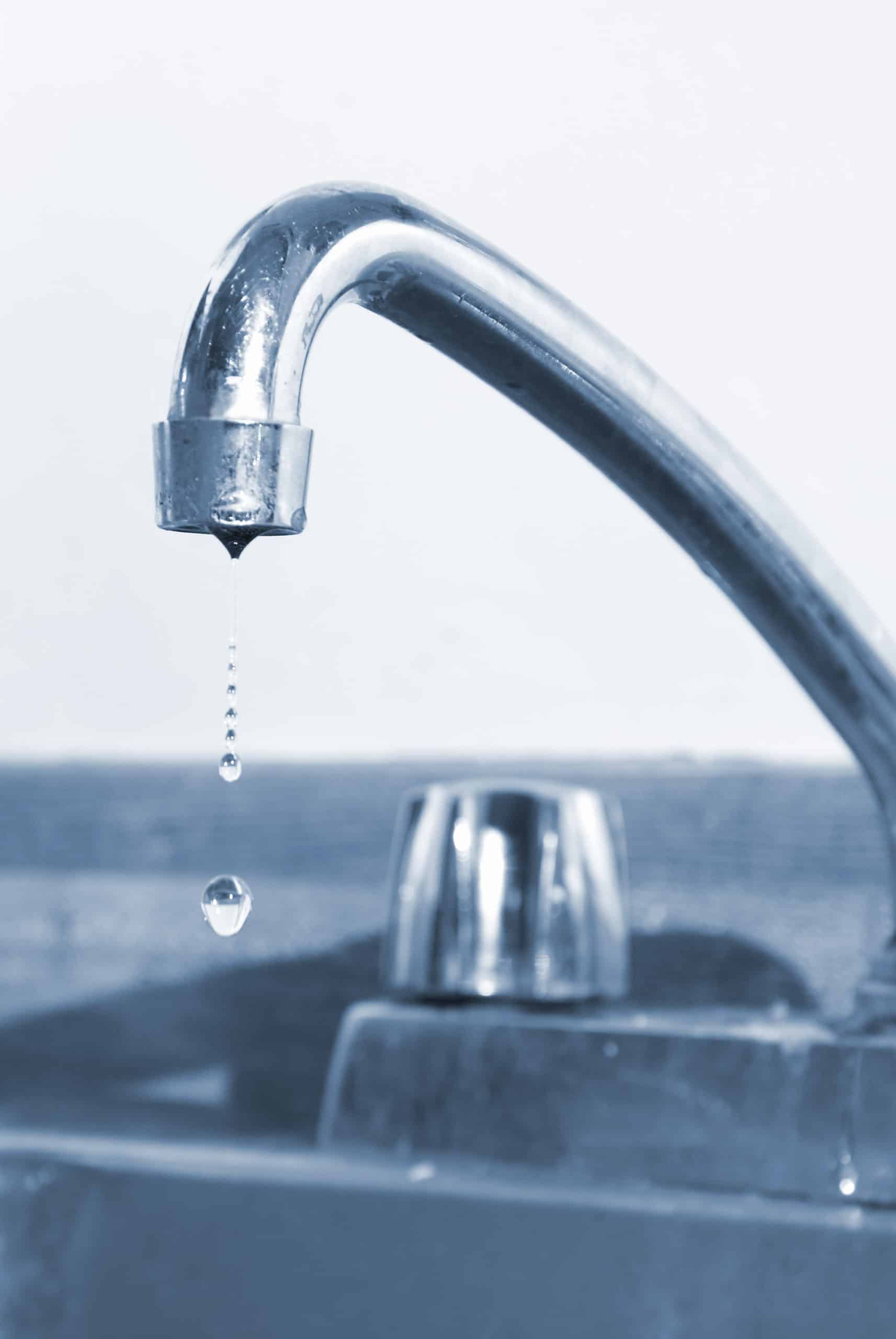Why It's Crucial to Resolve a Broken Faucet
Why It's Crucial to Resolve a Broken Faucet
Blog Article
The writer is making several great observations related to 4 Common Reasons for a Leaky Faucet overall in the content down the page.

Trickling faucets could appear like a minor aggravation, however their influence surpasses just the inconvenience of the noise. From drainage to sustaining unneeded financial expenses and wellness dangers, neglecting a leaking tap can bring about numerous repercussions. In this write-up, we'll delve into why it's important to resolve this usual family issue immediately and effectively.
Waste of Water
Environmental Impact
Dripping taps contribute substantially to water wastefulness. According to the Environmental Protection Agency (EPA), a single tap leaking at one drip per secondly can squander more than 3,000 gallons of water per year. This not just stress water resources but also influences ecological communities and wildlife based on them.
Financial Prices
Boosted Water Expenses
Beyond the ecological effect, trickling faucets can blow up water bills substantially. The gathered wastage over time equates into greater energy expenses, which might have been stayed clear of with prompt repair work.
Potential Home Damage
Additionally, extended dripping can cause damage to fixtures and surfaces bordering the faucet. Water buildup can trigger staining, rust, and even structural issues if left neglected, leading to added repair prices.
Wellness Worries
Mold and Mold Development
The constant existence of moisture from a dripping tap produces an optimal environment for mold and mold growth. These fungi not just jeopardize interior air quality yet also posture wellness dangers, specifically for individuals with respiratory system conditions or allergies.
Waterborne Illness
Stagnant water in dripping taps can end up being a breeding ground for germs and various other microorganisms, enhancing the danger of waterborne conditions. Impurities such as Legionella bacteria flourish in stationary water, potentially leading to severe illnesses when consumed or breathed in.
Do it yourself vs. Expert Repair service
Advantages and disadvantages of Do It Yourself Fixing
While some might attempt to repair a trickling tap themselves, do it yourself repairs include their own set of obstacles. Without correct expertise and devices, DIY attempts can exacerbate the problem or result in insufficient repairs, prolonging the trouble.
Benefits of Working With a Professional Plumber
Working with a specialist plumber guarantees that the underlying reason for the leaking tap is resolved successfully. Plumbing technicians possess the experience and tools to identify and fix faucet issues efficiently, saving time and reducing the danger of further damages.
Step-by-Step Guide to Dealing With a Dripping Faucet
Devices Needed
Before trying to fix a leaking tap, gather the necessary devices, consisting of a flexible wrench, screwdrivers, replacement parts (such as washing machines or cartridges), and plumber's tape.
Common Faucet Issues and Their Solutions
Recognize the type of faucet and the specific issue creating the drip. Common troubles include damaged washing machines, rusty shutoff seats, or defective O-rings. Refer to maker instructions or on-line tutorials for step-by-step assistance on fixings.
Safety nets
Normal Upkeep Tips
To avoid trickling taps, execute routine upkeep such as cleansing aerators, evaluating for leaks, and replacing damaged components promptly. Furthermore, think about setting up water-saving devices or upgrading to a lot more reliable fixtures.
Significance of Prompt Repair Works
Resolving leaking taps as quickly as they're seen protects against additional water waste and possible damages, inevitably saving both water and money in the future.
Impact on Building Worth
Understanding of Well-Maintained Residential Property
Maintaining a residential property in good condition, consisting of addressing upkeep problems like leaking faucets, improves its perceived value and worth among possible buyers or tenants.
Influence on Resale Value
Qualities with properly maintained plumbing components, including taps, command greater resale worths in the real estate market. Resolving trickling taps can add to a positive impact throughout property evaluations and negotiations.
Ecological Obligation
Specific Contribution to Preservation
Taking duty for fixing dripping faucets lines up with wider efforts toward water conservation and environmental sustainability. Every person's activities collectively make a substantial impact on maintaining valuable sources.
Sustainable Living Practices
By focusing on punctual fixings and adopting water-saving behaviors, people add to lasting living practices that profit both existing and future generations.
Verdict
Addressing a dripping tap surpasses plain convenience; it's a necessary action toward preserving water, decreasing economic prices, and protecting health and wellness and residential property. Whether via do it yourself repairs or professional help, doing something about it to repair trickling taps is a small yet impactful method to advertise liable stewardship of sources and contribute to a healthier, more lasting future.
How to Fix a Dripping or Leaky Faucet
A leaking faucet is one of the most common problems that homeowners encounter, but it being commonplace doesn’t make it any less annoying. The constant drip drip drip of a leaking bathtub faucet, showerhead, or sink tap can disturb your home’s serenity. Left neglected, a dripping faucet can also result in higher water bills and discoloration or mold growth in your sink or plumbing fixtures.
Fortunately, you don’t have to be a trained plumber to know how to stop a dripping faucet. With some basic tools, replacement parts, and a little patience, leaky faucet repair is a breeze. In this article, we’ll explain what causes dripping faucets and how you can fix them.
What Causes a Leaking Faucet?
Kitchen and bathroom faucets come in all manner of designs, but most involve some combination of valves, O-rings, seals, and washers. The O-ring is usually the weakest link, but any one of these pieces can wear down over time. Heat, moisture, temperature fluctuations, minerals, mold, and movement can contribute to warping and corrosion, breaking the watertight seal. This just comes with the territory of being a homeowner. Everything is always subject to wear and tear, and some component parts of your appliances and fixtures need to be replaced on occasion. At least replacement O-rings are cheap!
More rarely, dripping faucets can be a symptom of excessively high water pressure. Were this the case in your home, you would probably notice that the leak is not isolated to one faucet. Water pressure issues are harder to resolve on your own. We recommend contacting a professional plumber if you suspect your water pressure is too high.
How to Fix a Dripping Faucet
Pipe wrench or monkey wrench Allen wrench set Screwdrivers Old towel or rag Shut off the water.
Before you do anything, you need to turn off the water to keep from drenching your kitchen or bathroom. You should find a valve under the sink and against the wall. Once you’ve turned this valve, try turning the faucet on to confirm that the water source has been cut off.
If you can’t locate your local valve for the faucet you’re working on, you can always shut off the water to the house at the main valve. Of course, this will prohibit anyone from using the sinks, showers, or toilets while you’re working on the faucet that’s giving you trouble.
Plug or block the drain.
You’ll be disassembling the faucet and removing some small bits of hardware. Plug the drain with a stopper or rag to avoid the possibility of a small screw falling into your P-trap.
Take apart the faucet assembly.
There are several varieties of kitchen and bathroom faucets, each with its own manner of assembly. For detailed instructions on how to disassemble your faucet, you can refer to the fixture’s manual or contact the manufacturer. If you know whether you have a ball, disc, cartridge, or compression faucet, you can find detailed schematics online.
In general, you need to begin by removing the faucet handles. You might notice a small screw that you’ll need to remove with a screwdriver or Allen wrench. If you don’t see any visible securing hardware, it’s likely hidden under a decorative cap that can be unscrewed or popped off with flathead screwdriver.
Remove each piece methodically, consulting a schematic when necessary. Take notes or arrange the pieces in such a way to make it easier to correctly reassemble the faucet later.
Remove the cartridge.
Once you’ve removed the handles and securing hardware, you should be able to remove the valve cartridge or stem. Some cartridges will slide right out. Other faucet models will require you to loosen a nut with a pipe wrench before you can remove the valve stem.
Examine the exposed hardware.
With the cartridge or stem removed, inspect the component parts. Check the rubber O-rings for wear and tear. Also examine the seat washer for corrosion or other damage. These pieces are usually the responsible parties for a dripping faucet, but it’s worth inspecting the other component parts while you have the faucet disassembled.
Find replacement parts.
Once you’ve identified which faucet component has failed, find an identical replacement. Your local hardware store should have O-rings, seat washers, and other standard components in stock. If you have a luxury or uncommon faucet, you may have to contact the manufacturer for a replacement part.
It’s a good idea to take your old parts with you to the hardware store so you can compare them with the store’s inventory and be sure you’re purchasing the correct replacement.
Reassemble the faucet.
With your new parts in hand, reconstruct the faucet and handles. Don’t be tempted to overtighten screws or nuts. You might think this could create a better seal, but it can instead damage or bend a delicate part of the assembly and create a new problem for you.
Turn on the water and test the faucet.
The only thing left to do is test your work. Unplug the sink, turn the water back on, and try the faucet. Congratulate yourself on a job well done!
https://www.libertyhomeguard.com/how-to-fix-a-dripping-or-leaky-faucet/

As a reader on How to Fix a Dripping or Leaky Faucet , I was thinking sharing that excerpt was worth the trouble. Be sure to set aside a second to distribute this blog posting if you appreciated it. I recognize the value of reading our article about How to Fix a Dripping or Leaky Faucet .
Report this page